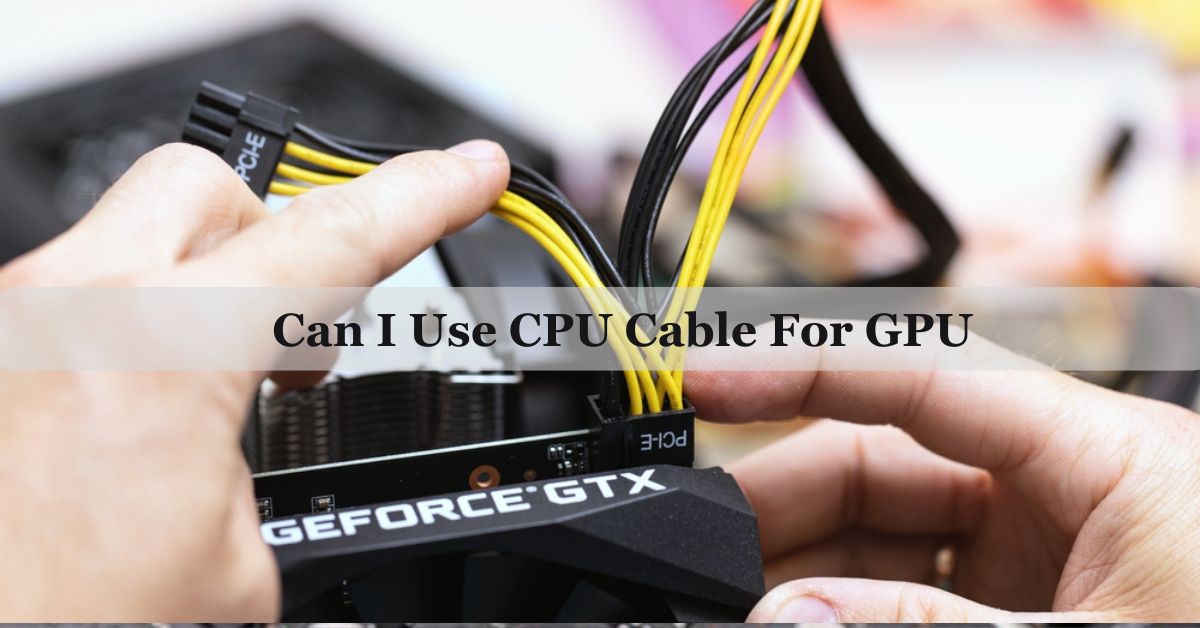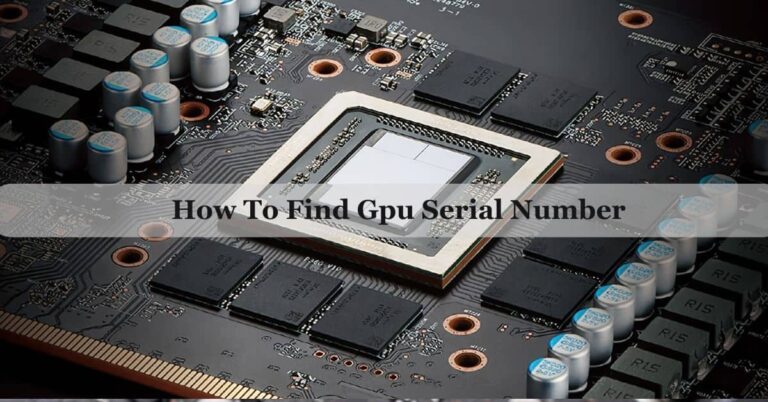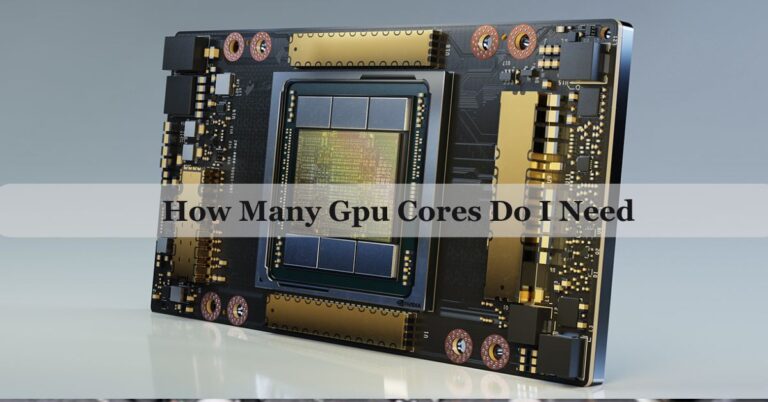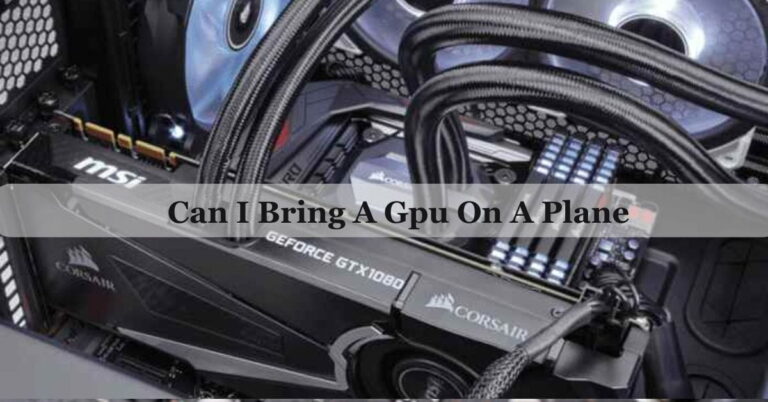Can I Use CPU Cable For GPU – Upgrade Your Knowledge!
Proper cabling in PC building is crucial for ensuring your components receive the correct power and function reliably. Using the right cables helps prevent damage and keeps your system running smoothly.
No, you shouldn’t use a CPU cable for a GPU. CPU cables and GPU cables are designed differently and serve different power needs, so using the wrong cable can cause problems or damage your components. Always use the correct cable for each part.
In this article, we will discuss “Can I Use CPU Cable For GPU”.
Understanding CPU And GPU Cable:
What Is A CPU Cable?
A CPU cable provides power to your computer’s processor (CPU) and typically has 4-pin, 4+4-pin, or 8-pin connectors. It delivers the stable power needed for the CPU to function properly.
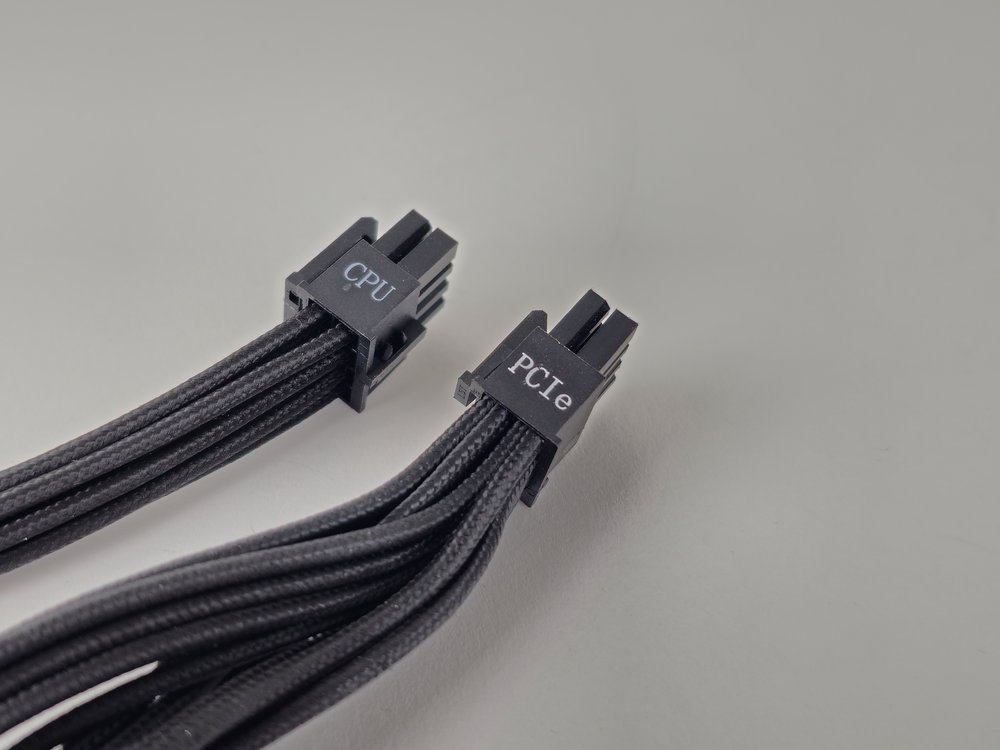
What Is A GPU Cable?
A GPU cable powers your graphics card (GPU) and usually has 6-pin or 8-pin connectors, with some high-end GPUs requiring more. GPUs need more power for complex graphics tasks, so these cables are designed to meet those higher power demands for optimal performance.
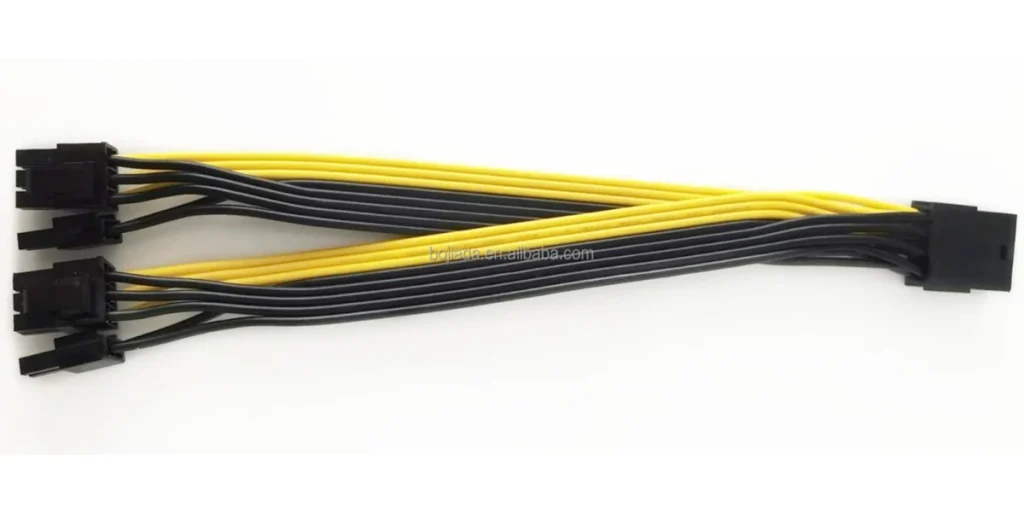
What Is The Difference Between CPU And GPU Cable?
1. Purpose:
- CPU Cable: Provides power to the computer’s processor (CPU), which handles general computing tasks.
- GPU Cable: Supplies power to the graphics card (GPU), which processes and displays graphics and images.
2. Power Requirements:
- CPU Cable: Designed for lower power requirements compared to GPU cables. The CPU needs a stable but lower amount of power.
- GPU Cable: Designed to handle higher power loads because GPUs require more power for graphics processing, especially in gaming or rendering tasks.
3. Connectors:
- CPU Cable: Typically comes with 4-pin, 4+4-pin, or 8-pin connectors. These connectors fit into specific ports on the motherboard.
- GPU Cable: Usually has 6-pin or 8-pin connectors. These connectors are used to power the GPU directly and may come in different configurations depending on the GPU’s power needs.
4. Design and Wiring:
- CPU Cable: Wired to deliver a stable and specific voltage required by the CPU.
- GPU Cable: Wired to supply higher voltages and current to meet the GPU’s power needs.
5. Location of Connection:
- CPU Cable: Connects directly to the motherboard, often near the CPU socket.
- GPU Cable: Connects directly to the graphics card, which is installed in the PCI-E slot on the motherboard.
6. Compatibility:
- CPU Cable: Not compatible with GPU power ports and vice versa due to different power delivery requirements and connector designs.
- GPU Cable: Not designed for use with CPU power ports.
7. Function:
- CPU Cable: Ensures that the CPU gets the right amount of power for processing tasks and running the operating system and applications.
- GPU Cable: Ensures that the GPU gets enough power for rendering graphics and handling video output.
Read More: Is 85 C Hot For GPU – Complete Guide Of 2024!
Types Of CPU And GPU Cable:
Types Of CPU Cables:
- 4-pin CPU cables: 4-pin CPU cables are often found in older or less power-hungry systems. They provide enough power for basic operations but might not be sufficient for modern, high-performance CPUs.
- 8-pin CPU cables: 8-pin CPU cables are more common in current PC builds. They can deliver more power, which is necessary for modern CPUs that require higher power levels to function optimally.
Types Of GPU Cables:
- 6-pin GPU cables: 6-pin GPU cables are standard for mid-range graphics cards. They provide a decent amount of power but might not be sufficient for high-end GPUs.
- 8-pin GPU cables: 8-pin GPU cables are used for more powerful graphics cards, providing the additional power needed for optimal performance. Some GPUs even require multiple 8-pin connections due to their high power consumption.
Can I Use CPU Cable For GPU?
No, you shouldn’t use a CPU cable for a GPU. CPU cables and GPU cables are designed for different power needs and have different connectors. CPU cables provide less power than GPU cables, which can lead to insufficient power for the GPU, causing performance issues or damage.
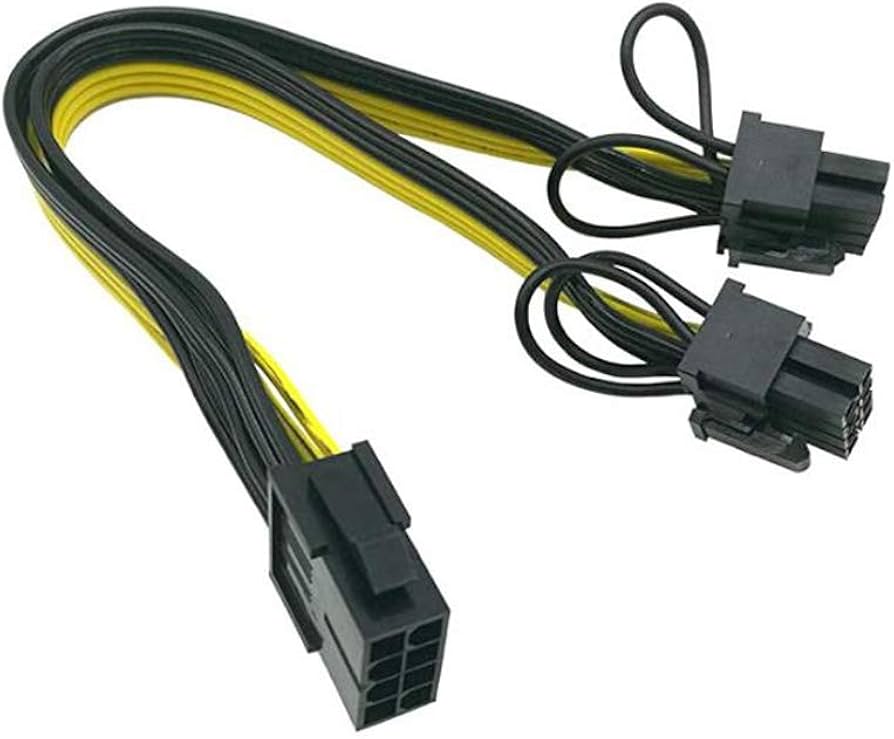
Why Shouldn’t I Use A CPU Cable For A GPU?
You shouldn’t use a CPU cable for a GPU because they have different power needs and wiring. A CPU cable supplies less power than a GPU cable, so using the wrong one can cause your GPU to underperform or get damaged.
When Should I Use The Correct Cables?
You should use the correct cables whenever you’re setting up or upgrading your computer. Each cable is designed for specific components, like the CPU or GPU, and provides the right amount of power they need to function properly.
Using the wrong cable can lead to performance issues or damage. Always match the cables to their intended components to ensure your system runs smoothly and safely.
Read More: What Temperature Is Too Hot For A Gpu – A Complete Guide Of 2024!
How Can I Identify the Right Cables?
1. Check the Labels:
Look at the labels on your cables and connectors. CPU cables are usually labeled “CPU,” while GPU cables are marked “PCI-E” or “GPU.” These labels help you identify which cable goes where.
2. Consult Your PSU Manual:
Your power supply unit (PSU) manual will provide detailed information about each cable and its intended use. Refer to this manual to match the cables with the correct components.
3. Examine the Connectors:
Different cables have different connector shapes and pin configurations. CPU cables might have 4-pin or 8-pin connectors, while GPU cables typically have 6-pin or 8-pin connectors. Match the connector type with the port on your motherboard or GPU.
4. Use Cable Markings:
For modular PSUs, the cables often have specific markings or labels indicating their use. Check these markings to ensure you’re connecting the right cables to the right ports.
5. Check Power Requirements:
Verify the power requirements for your components. The PSU and cables should match the power needs of your CPU and GPU. This information is usually found in the component’s manual or on the manufacturer’s website.
What If I Don’t Have the Right Cables?
If you don’t have the right cables, you should get the correct ones as soon as possible. You can buy additional cables specifically designed for your PSU and GPU, or check if your PSU manufacturer offers the right cables. Using the wrong cables can cause your components to not work properly or even get damaged.
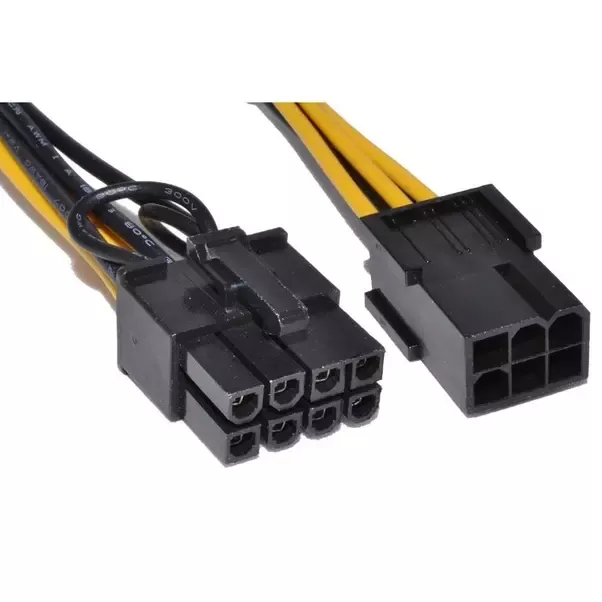
Common Mistakes To Avoid:
1. Forcing Connectors:
Never force a connector into a port. If it doesn’t fit easily, you might have the wrong cable or connector. Forcing it can damage both the cable and the component.
2. Mixing Cables:
Avoid mixing cables from different power supplies. Each PSU is designed with specific cables in mind, and mixing them can cause compatibility issues or damage.
3. Using Unlabeled Cables:
Don’t use cables that are not labeled or that you’re unsure about. Always check the labels and specifications to make sure you’re using the right cable for each component.
4. Ignoring Power Requirements:
Don’t ignore the power requirements of your CPU and GPU. Using a cable that doesn’t meet the power needs of your components can lead to instability or damage.
5. Skipping Documentation:
Always refer to the documentation provided with your PSU and components. Manuals provide important information about which cables to use and how to connect them properly.
Read More: How Much GPU Usage Is Normal – Complete Guide 2024!
Can Using The Wrong Cable Damage My Computer?
Yes, using the wrong cable can damage your computer. If you use a cable that doesn’t match the power requirements or connector types of your components, it can lead to insufficient power, causing the hardware to underperform or even fail.
How Can I Tell If My Cables Are Compatible?
To tell if your cables are compatible, check the labels on both the cables and the connectors. CPU cables are usually labeled “CPU,” and GPU cables are marked “PCI-E” or “GPU.” Match these labels with the ports on your components.
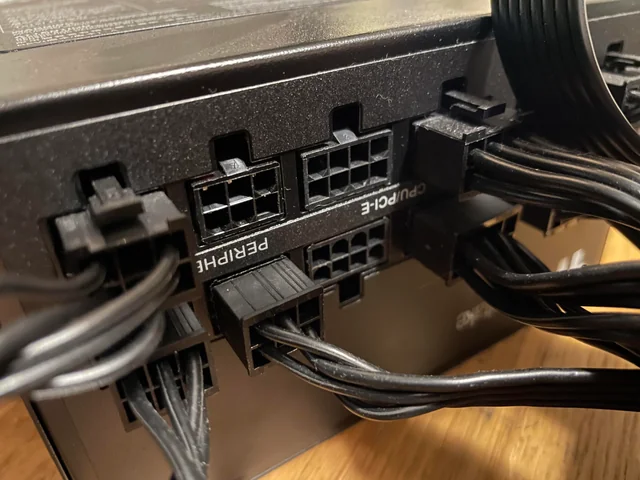
Also, consult your power supply unit’s (PSU) manual for detailed information on which cables are meant for each part. By ensuring the cables match their intended use and connectors, you can confirm they are compatible and will work properly with your system.
What Happens If I Use a CPU Cable Temporarily?
Using a CPU cable temporarily for a GPU might seem like a quick fix, but it can cause problems. CPU cables are designed for lower power needs compared to GPU cables.
If you use a CPU cable, it may not provide enough power for the GPU, leading to poor performance, system crashes, or even damage to your components. It’s best to use the correct GPU cable to ensure proper power delivery and keep your system running smoothly and safely.
Are All Power Supply Units (PSUs) The Same?
No, not all power supply units (PSUs) are the same. PSUs come in different wattages, connector types, and designs. Some PSUs have more power connectors or different cable configurations to support various components like CPUs, GPUs, and other peripherals.
It’s important to choose a PSU that matches your computer’s power requirements and has the right cables for your components. Always check the PSU’s specifications and ensure it provides enough power and the correct connectors for your system.
Read More: Is 60 Degrees Celsius Hot For A Gpu – Safe GPU Temperature!
Can I Mix And Match Cables From Different PSUs?
No, you should not mix and match cables from different power supply units (PSUs). Each PSU is designed with specific cables and connectors that match its power output and internal wiring.
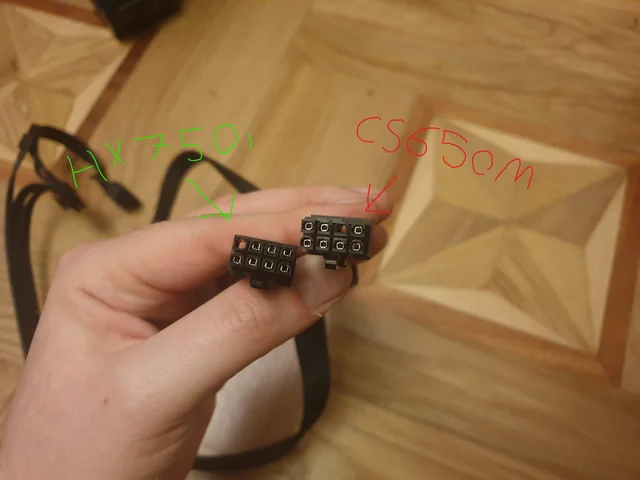
Using cables from different PSUs can cause compatibility issues, electrical problems, or damage to your components. Always use the cables that come with your PSU to ensure everything works correctly and safely.
FAQs:
1. Can I Use An Adapter To Connect A CPU Cable To A GPU?
Adapters are not usually recommended for connecting CPU cables to GPUs. It’s better to use the correct cable designed for your GPU to avoid potential issues.
2. What Type Of Cable Should I Use For A Modern GPU?
For most modern GPUs, you should use a PCI-E (Peripheral Component Interconnect Express) cable. These are often 6-pin or 8-pin cables that come with your PSU.
3. How Do I Know If My PSU Supports My GPU?
Check your PSU’s manual or specifications. It should list the types of cables and power ratings it supports. Ensure it has the right cables and power for your GPU.
4. Can I Use A 6-Pin Cable For An 8-Pin GPU?
No, you should not use a 6-pin cable for an 8-pin GPU. An 8-pin GPU requires more power, and using a 6-pin cable might not provide enough power.
5. What If My PSU Doesn’t Have Enough GPU Cables?
If your PSU doesn’t have enough GPU cables, consider buying additional cables or upgrading to a PSU with more GPU power connectors.
6. Can I Use A CPU Cable For A Low-Power GPU?
Even for a low-power GPU, it’s best to use a GPU-specific cable. Using the correct cable ensures reliable power delivery and prevents potential issues.
7. Are CPU and GPU Cables Interchangeable for All PSUs?
No, CPU and GPU cables are not interchangeable. Each cable type is designed for specific components and power requirements. Always use the correct cable for each component.
8. How Can I Avoid Power Supply Issues?
To avoid power supply issues, always use the cables provided with your PSU, and make sure they match the requirements of your CPU and GPU.
Conclusion:
In conclusion, you should not use a CPU cable for a GPU. CPU cables and GPU cables are designed differently to meet specific power needs. Using the wrong cable can lead to insufficient power, causing performance issues or damage. Always use the correct cables for each component to ensure your computer runs smoothly and safely. Proper cabling is essential for the stability and performance of your system.
Related Posts:
- What Is A Good Temp For GPU – Ultimate Guide Of 2024
- Do GPU Fans Push Or Pull – Complete Guide Of 2024!
- How To Know If GPU Will Fit In Case – Check GPU Size Know!
- How Many Gpu Cores Do I Need – Complete Guide For 2024!

James George is a GPU expert with 5 years of experience in GPU repair. On Techy Cores, he shares practical tips, guides, and troubleshooting advice to help you keep your GPU in top shape. Whether you’re a beginner or a seasoned tech enthusiast, James’s expertise will help you understand and fix your GPU issues easily.

